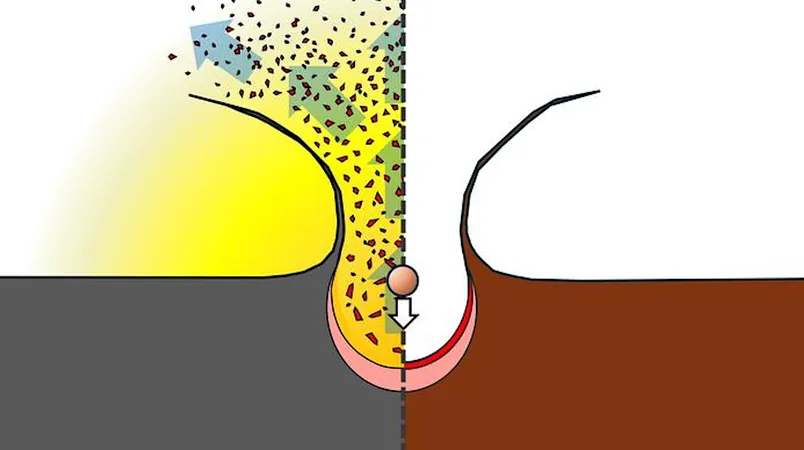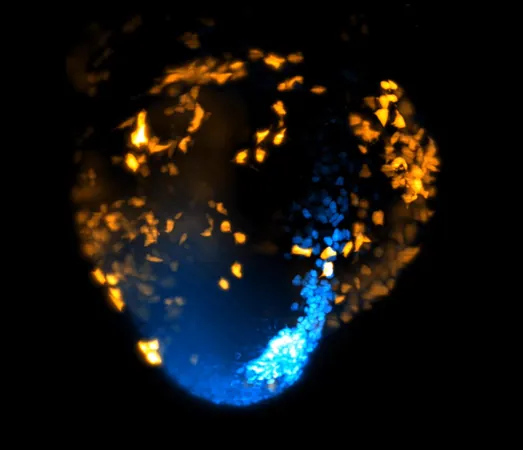
Shocking Discovery: Why Some Meteorites Appear Less Affected by Impacts!
2025-04-27
Author: Benjamin
The Cosmic Mystery Unveiled
In a groundbreaking revelation, scientists have solved a 30-year enigma regarding meteorites. It turns out that those rich in carbon look less affected by impacts due to explosive gases generated during collisions, flinging telltale evidence into the cosmos. Thanks to this discovery from Kobe University, not only is an old puzzle pieced together, but it also paves the way for future missions to the dwarf planet Ceres!
Mysterious Impact Patterns
Planetary scientists and astrobiologists have long been bewildered by a consistent pattern: carbon-rich meteorites exhibit significantly less evidence of high-speed impacts compared to their carbon-free counterparts. It seemed as if these carbon-containing meteorites had somehow collided with less intensity—an anomaly yet to be explained.
The Genius of Shock Metamorphism
Astrophysicist KUROSAWA Kosuke, fascinated by impact physics and the concept of 'shock metamorphism,' took the challenge upon himself. Inspired by a two-decade-old theory suggesting vapor from water-containing minerals during impacts could expel evidence into space, he set out to test this idea rigorously.
Innovative Experiments
Kurosawa's research employed a state-of-the-art two-stage light gas gun to simulate the impacts and analyze the gases created. This innovative setup allowed the team to understand how collisions impacted meteorite materials rich in carbon versus those that were not, without contamination skewing the results.
Explosive Findings
Much to their excitement, the team discovered that the impacts on carbonaceous meteorites sparked intense chemical reactions, generating superheated carbon monoxide and carbon dioxide gases. This explosive process was found to be powerful enough to displace surrounding rock material, literally sending shocking evidence into the void of space. Essentially, these meteorites aren't less shocked; the signs of their trauma have been blown away!
Future of Space Exploration
However, hope remains for discovering these impacts' remnants. Kurosawa explained that larger celestial bodies, like Ceres, might have strong enough gravity to pull back the ejected materials onto their surfaces. This means Ceres could be a treasure trove of highly shocked meteorite materials, guiding upcoming planetary exploration missions.
Collaboration and Support
This fascinating research was supported by various institutions, including the Japan Society for the Promotion of Science and the Science and Technology Facilities Council, in partnership with esteemed centers such as the Chiba Institute of Technology and Imperial College London.









 Brasil (PT)
Brasil (PT)
 Canada (EN)
Canada (EN)
 Chile (ES)
Chile (ES)
 Česko (CS)
Česko (CS)
 대한민국 (KO)
대한민국 (KO)
 España (ES)
España (ES)
 France (FR)
France (FR)
 Hong Kong (EN)
Hong Kong (EN)
 Italia (IT)
Italia (IT)
 日本 (JA)
日本 (JA)
 Magyarország (HU)
Magyarország (HU)
 Norge (NO)
Norge (NO)
 Polska (PL)
Polska (PL)
 Schweiz (DE)
Schweiz (DE)
 Singapore (EN)
Singapore (EN)
 Sverige (SV)
Sverige (SV)
 Suomi (FI)
Suomi (FI)
 Türkiye (TR)
Türkiye (TR)
 الإمارات العربية المتحدة (AR)
الإمارات العربية المتحدة (AR)